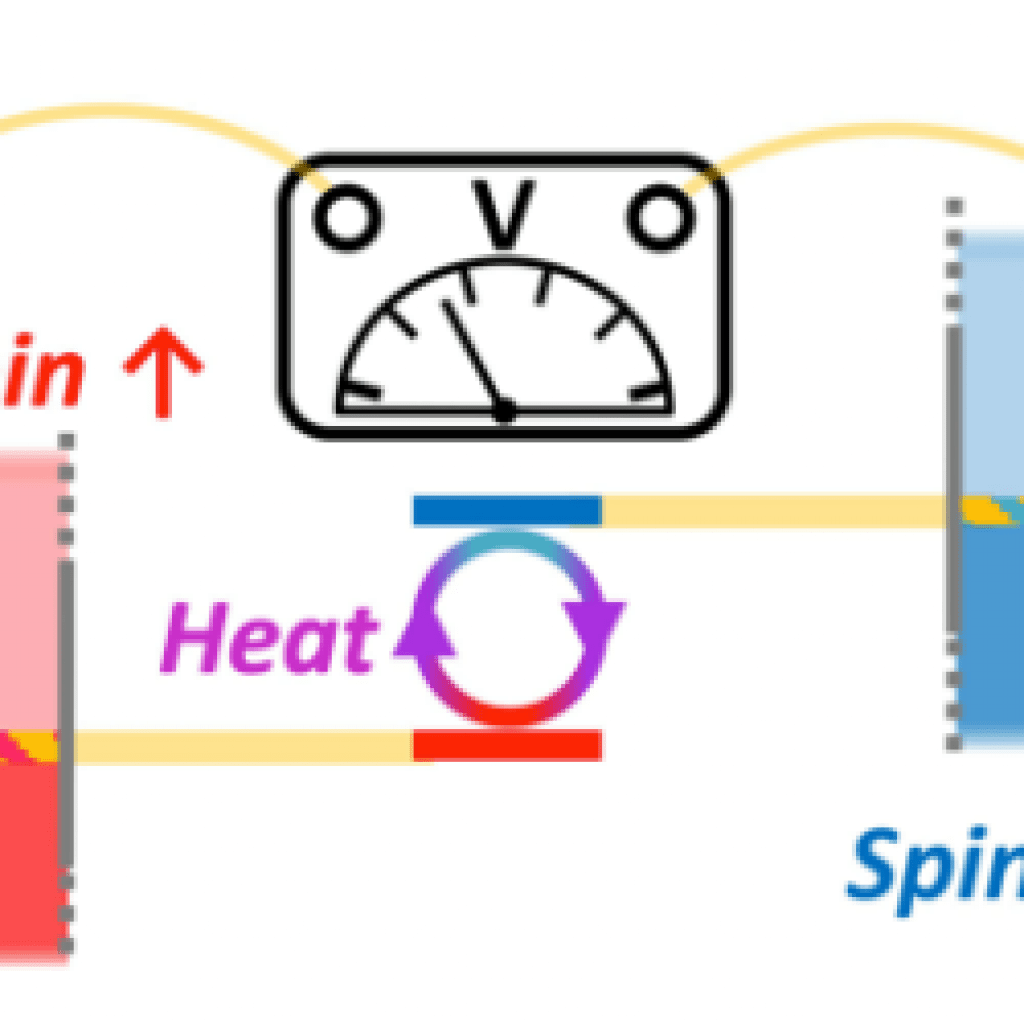(Phys.org) Today’s energy-hungry global society is struggling with how to mitigate the effects of man-made climate change. Addressing this challenge from a technological standpoint is therefore likely to require the maturation of bold new physical concepts that can be fast-tracked technologically.
An international scientific team from the CNRS, the University of Strasbourg and University of Lorraine in France, together with the Uppsala University in Sweden, has fortuitously discovered one such concept at the poorly understood/documented intersection between two otherwise disjointed research fields. Spintronics comprises next-generation, low-power electronics that utilize the electron’s quantum spin property. It is thus mostly concerned with information storage/communication technologies. Quantum physics/thermodynamics aims to reexamine the rules of thermodynamics when matter is confined at the nanoscale to exhibit quantum properties, and thus to understand how quantum engines operate.
The team’s experiments and analyses show that it is possible to assemble an electrical generator that utilizes the electron spin to harvest thermal fluctuations at room temperature. Referring to the engine’s schematic, the harvesting of ambient temperature occurs over paramagnetic (PM) centers —- atom-level magnets whose orientation fluctuates due to heat. The engine’s electrodes, called spintronic selectors, allow electrons of only one spin (↑ in red, or ↓ in blue) to conduct. Because heat mixes the electron spin on the PM center (middle) with energetically separated spin energy levels, transport (yellow lines) between the PM center and the electrodes occurs at different energy levels for each electrode. This causes a spontaneous bias voltage V to appear between the electrodes, and thus a spontaneous current to flow once the electrical circuit is closed.
Combining Spintronics and Quantum Thermodynamics to Harvest Energy at Room Temperature
